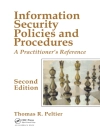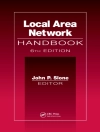Discover the process of e-discovery and put good practices in
place.
Electronic information involved in a lawsuit requires a
completely different process for management and archiving than
paper information. With the recent change to Federal Rules of Civil
Procedure making all lawsuits subject to e-discovery as soon as
they are filed, it is more important than ever to make sure that
good e-discovery practices are in place.
e-Discovery For Dummies is an ideal beginner resource for
anyone looking to understand the rules and implications of
e-discovery policy and procedures. This helpful guide introduces
you to all the most important information for incorporating legal,
technical, and judicial issues when dealing with the e-discovery
process. You’ll learn the various risks and best practices for a
company that is facing litigation and you’ll see how to develop an
e-discovery strategy if a company does not already have one in
place.
* E-discovery is the process by which electronically stored
information sought, located, secured, preserved, searched,
filtered, authenticated, and produced with the intent of using it
as evidence
* Addresses the rules and process of e-discovery and the
implications of not having good e-discovery practices in place
* Explains how to develop an e-discovery strategy if a company
does not have one in place
e-Discovery For Dummies will help you discover the
process and best practices of managing electronic information for
lawsuits.
Innehållsförteckning
Introduction.
Part I: Examining e-Discovery and ESI Essentials.
Chapter 1: Knowing Why e-Discovery Is a Burning Issue.
Chapter 2: Taking a Close Look at Electronically Stored Information (ESI).
Chapter 3: Building e-Discovery Best Practices into Your Company.
Part II: Guidelines for e-Discovery and Professional Competence.
Chapter 4: The Playbook: Federal Rules and Advisory Guidelines.
Chapter 5: Judging Professional Competence and Conduct.
Part III: Identif ying, Preser ving, and Collecting ESI.
Chapter 6: Identifying Potentially Relevant ESI.
Chapter 7: Complying with ESI Preservation and a Litigation Hold.
Chapter 8: Managing e-Discovery Conferences and Protocols.
Part IV: Processing, Protecting, and Producing ESI.
Chapter 9: Processing, Filtering, and Reviewing ESI.
Chapter 10: Protecting Privilege, Privacy, and Work Product.
Chapter 11: Producing and Releasing Responsive ESI.
Part V: Get ting Litigation Ready.
Chapter 12: Dealing with Evidentiary Issues and Challenges.
Chapter 13: Bringing In Special Forces: Computer Forensics.
Part VI: Strategizing for e-Discovery Success.
Chapter 14: Managing and Archiving Business Records.
Chapter 15: Viewing e-Discovery Law from the Bench.
Chapter 16: e-Discovery for Large-Scale and Complex Litigation.
Chapter 17: e-Discovery for Small Cases.
Part VII: The Part of Tens.
Chapter 18: Ten Most Important e-Discovery Rules.
Chapter 19: Ten Ways to Keep an Edge on Your e-Discovery Expertise.
Chapter 20: Ten e-Discovery Cases with Really Good Lessons.
Glossary.
Index.
Om författaren
Linda Volonino is an e-discovery consultant and computer forensics expert who aids lawyers and judges in preparing for e-discovery. She is coauthor of Computer Forensics For Dummies. Ian Redpath is an attorney with 32 years of litigation experience in federal courts. He consults on e-discovery.












